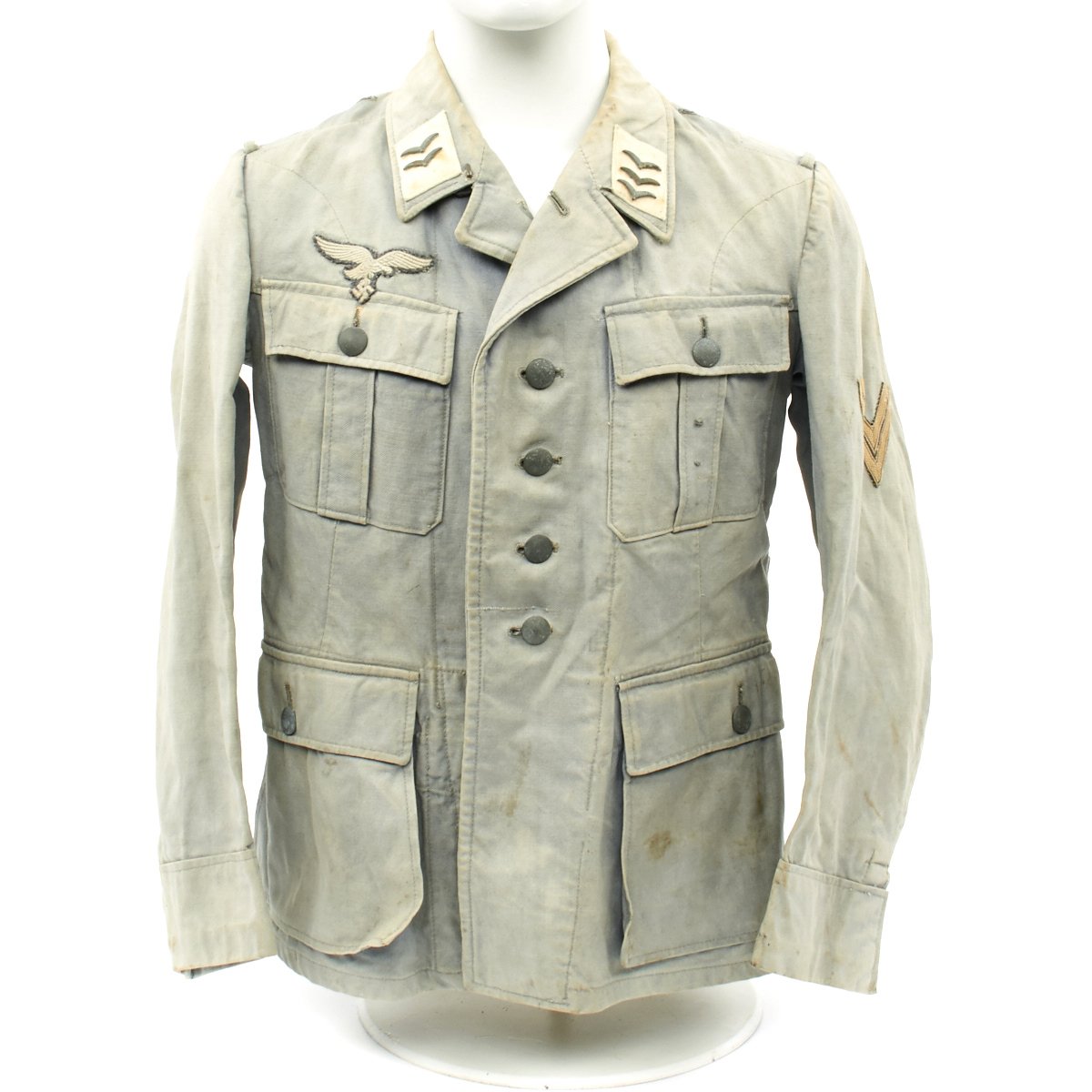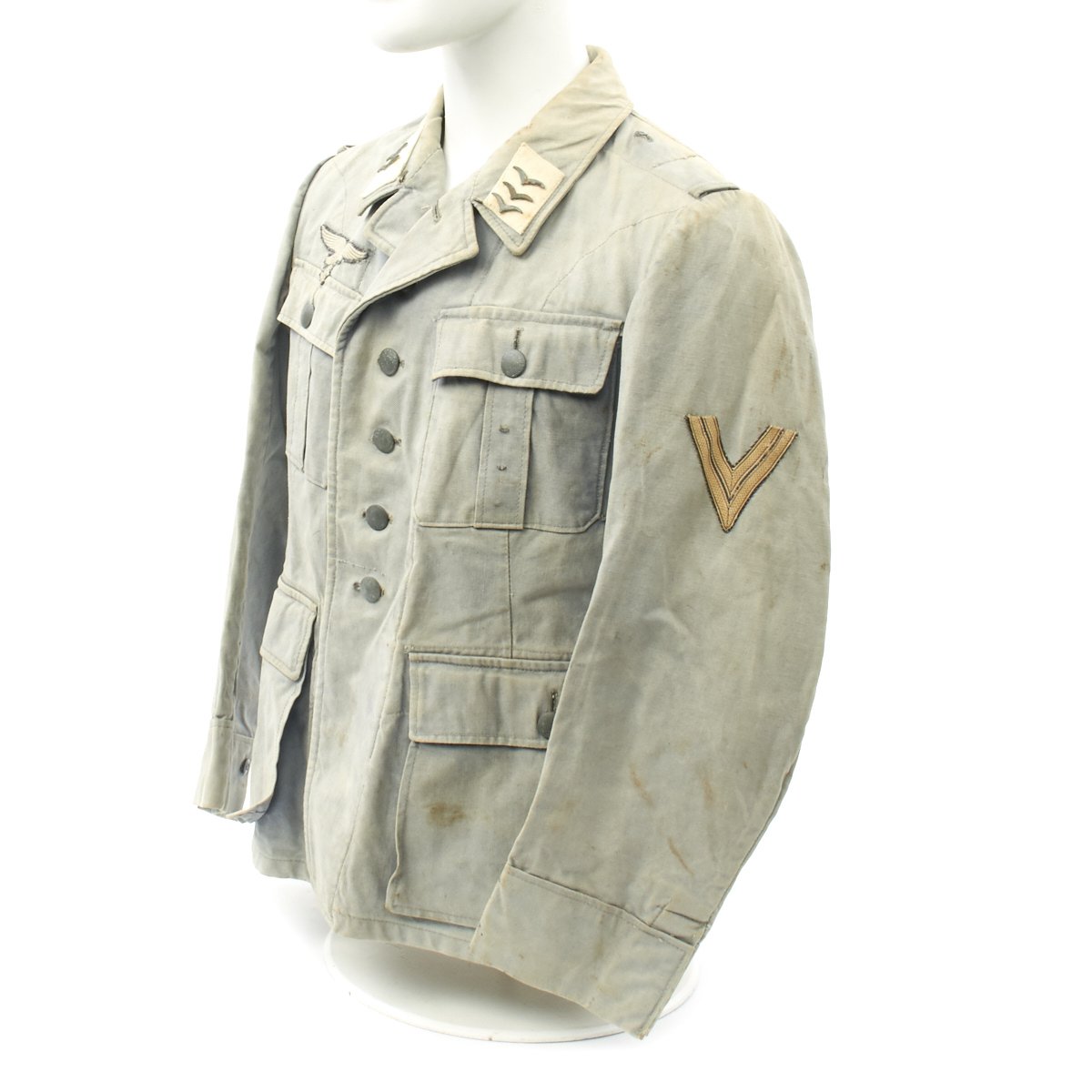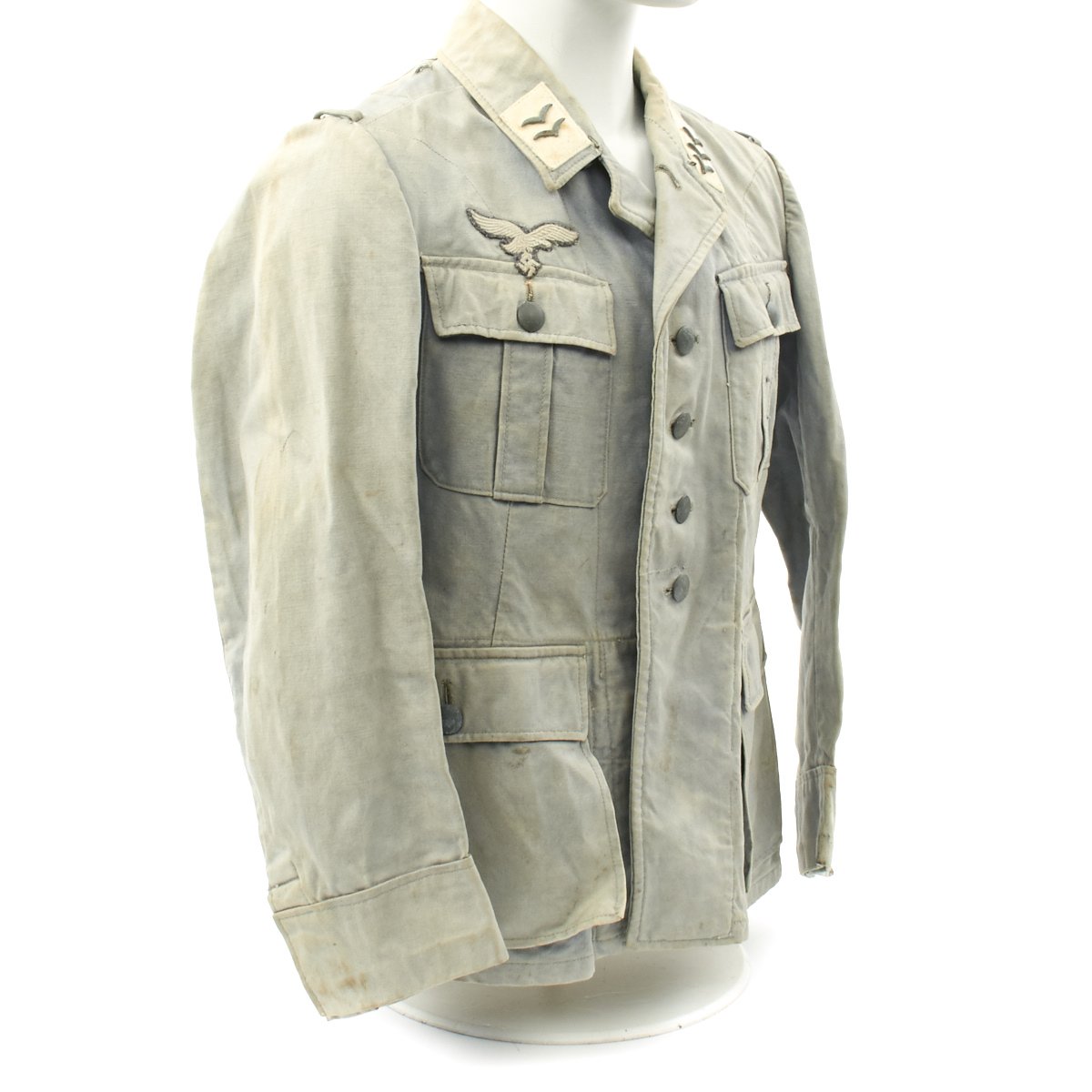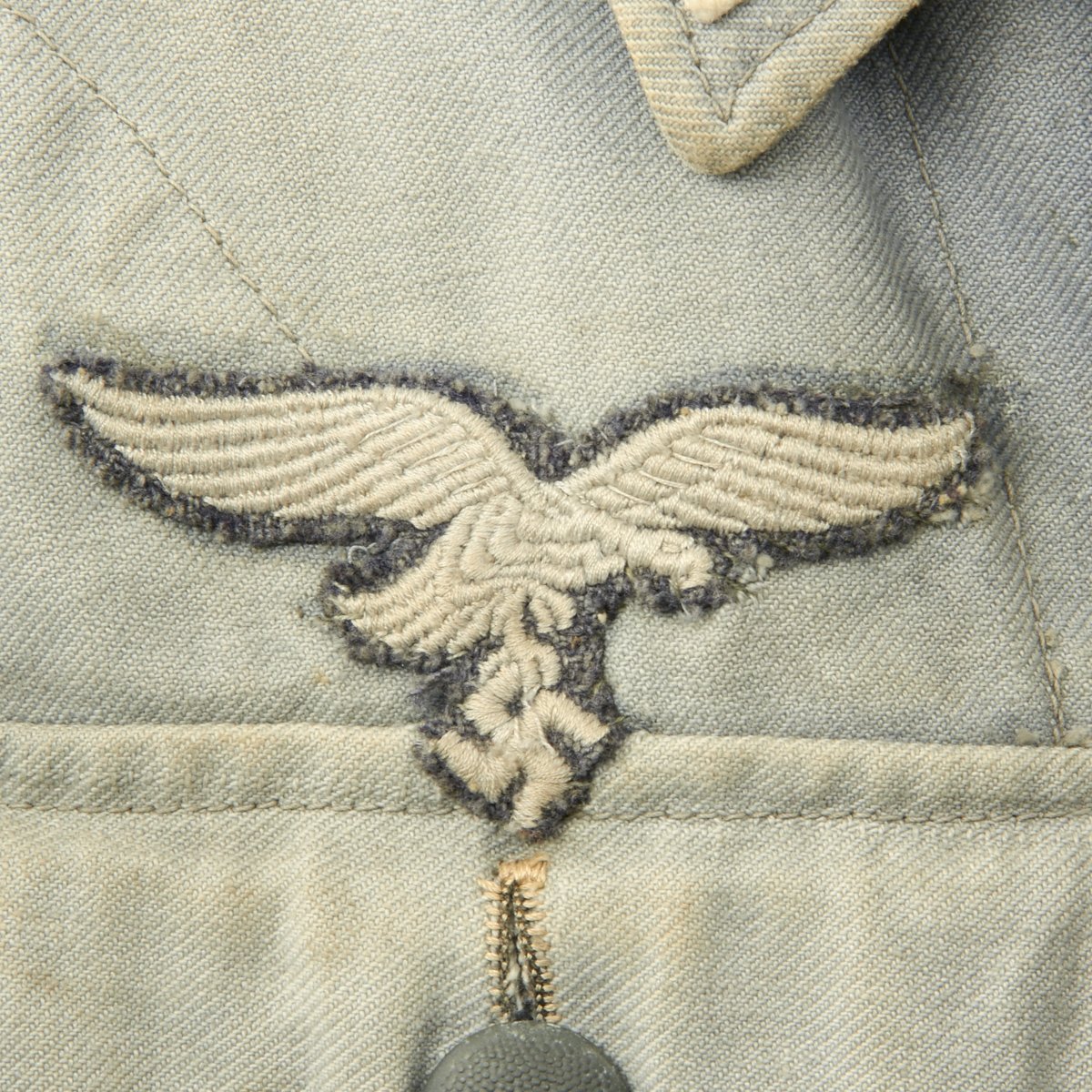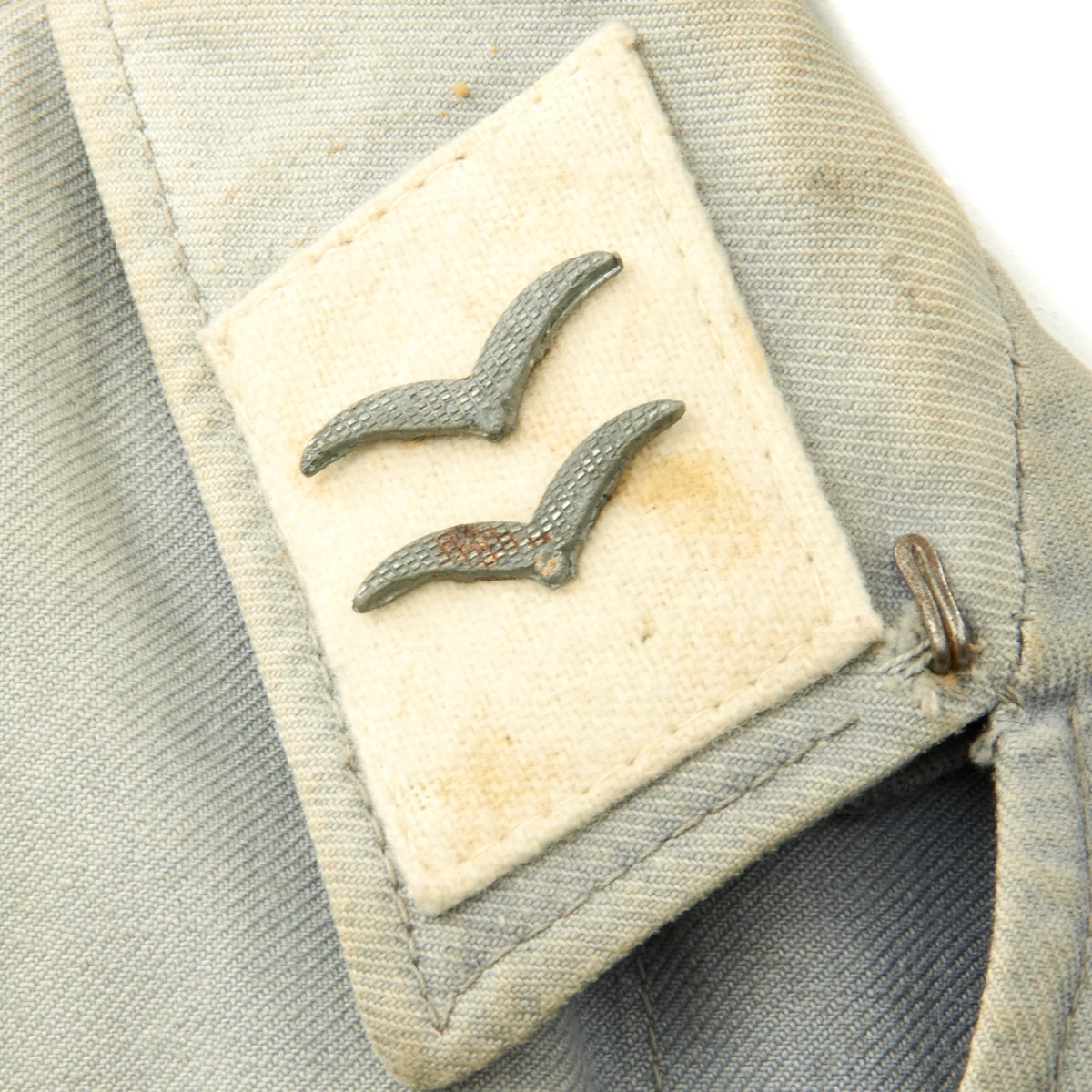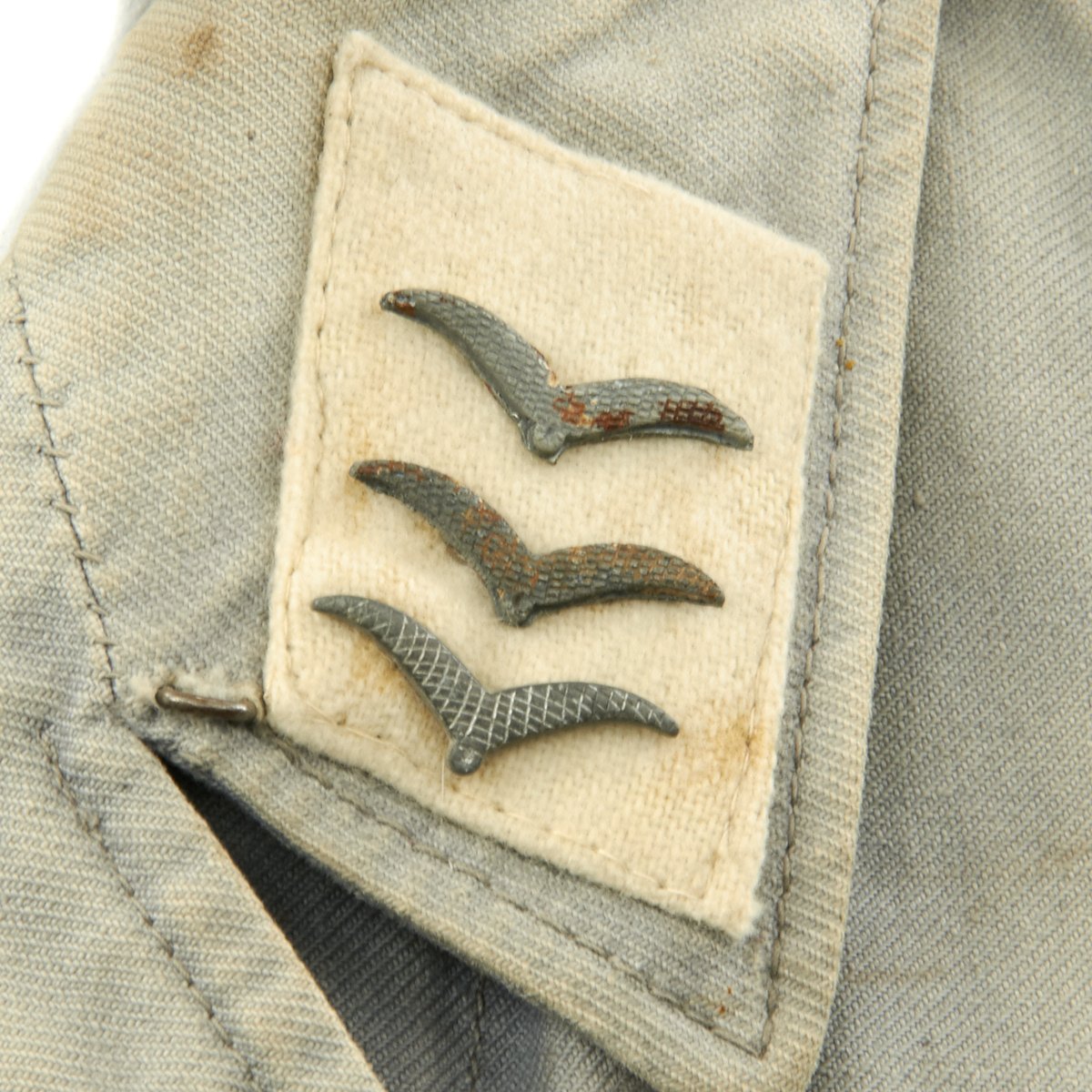Original German WWII Luftwaffe Hermann Göring Division Obergefreiter Field Tunic Original Items
$ 1.295,00 $ 323,75
Original Item: One-of-a-kind. This is an eye-catching example of a rare WW2 Luftwaffe Hermann Göring Division Obergefreiter (Corporal) Service Tunic. It is blue cotton construction. The tunic is untouched and in excellent overall condition. The front closes with six grey painted pebbled buttons. The attractive luftwaffe breast eagle is machine embroidered and is machine stitched to the chest. The Hermann Göring Division collar tabs have a white wool base and three metal birds denoting the rank of Obergefreiter (one bird is missing from right tab). The left should bears an embroidered Obergefreiter chevron. The exterior of this tunic is clean and showing some fading and minor staining. The interior bears multiple ink stamped maker markings and designations. Size is approximately a US 40.
From 1935 and for the following 10 years, the German Military wore a wide selection of German Army (Heer) Uniforms. Enlisted men generally wore Army (Heer) Uniforms issued from military depots. Most enlisted soldiers wore wool trousers and a tunic with four external pockets, known as a Feldbluse (field blouse). Before the war, soldiers also were issued a walking-out tunic, with flashy insignia, called the Waffenrock. Officers wore the same general uniform styles, but as officers had to supply their own uniforms, they usually wore tailor made versions. There were also myriad varieties of specialized uniforms worn by certain units or in specific situations, from the stylish black wool “wraps” worn by crews of armored fighting vehicles, to the drab HBT work uniforms. There were tropical and summer Army (Heer) Uniforms, and camouflage smocks for combat troops. For troops operating in winter climates, there were long wool overcoats, fur clothing articles, and padded jacket and trousers sets. In 1944, a new uniform was introduced, featuring a short jacket with only two external pockets. Most but not all German Army uniform jackets bore the Heer emblem of an eagle holding a swas.
Fast Shipping with Professional Packaging
Thanks to our longstanding association with UPS FedEx DHL, and other major international carriers, we are able to provide a range of shipping options. Our warehouse staff is expertly trained and will wrap your products according to our exact and precise specifications. Prior to shipping, your goods will be thoroughly examined and securely secured. We ship to thousands clients each day across multiple countries. This shows how we're dedicated to be the largest retailer on the internet. Warehouses and distribution centres can be located throughout Europe as well as the USA.
Note: Orders with more than one item will be assigned a processing date depending on the item.
Before shipping before shipping, we'll conduct a thorough inspection of the items you have ordered. Today, the majority of orders will be delivered within 48 hours. The delivery time will be between 3-7 days.
Returns
The stock is dynamic and we cannot completely manage it because multiple stakeholders are involved, including our factory and warehouse. So the actual stock may alter at any time. It's possible that you may not receive your order once the order has been made.
Our policy is valid for a period of 30 days. If you don't receive the product within 30 days, we are not able to issue a refund or an exchange.
You can only return an item if it is unused and in the same state as the day you received it. You must have the item in its original packaging.
Related products
Uncategorized
Armoured Fighting Vehicles of the World: AFVs of World War One (Hardcover Book) New Made Items
Uncategorized
Uncategorized
Uncategorized
Band of Brothers ORIGINAL GERMAN WWII Le. F.H. 18 10.5cm ARTILLERY PIECE Original Items
Uncategorized
Uncategorized
Uncategorized
Uncategorized
Uncategorized
Uncategorized
Angolan Rebel 1970s era 60mm Inert Display Mortar from Angolan Civil War Original Items
Uncategorized
Australian WWII Owen MK1 Machine Carbine SMG Custom Fabricated Replica with Sling Original Items
Uncategorized
Uncategorized
Uncategorized
Uncategorized
Uncategorized
Uncategorized
Armored Burgonet Helmet & Polearm from Scottish Castle Leith Hall Circa 1700 Original Items
Uncategorized
Uncategorized
